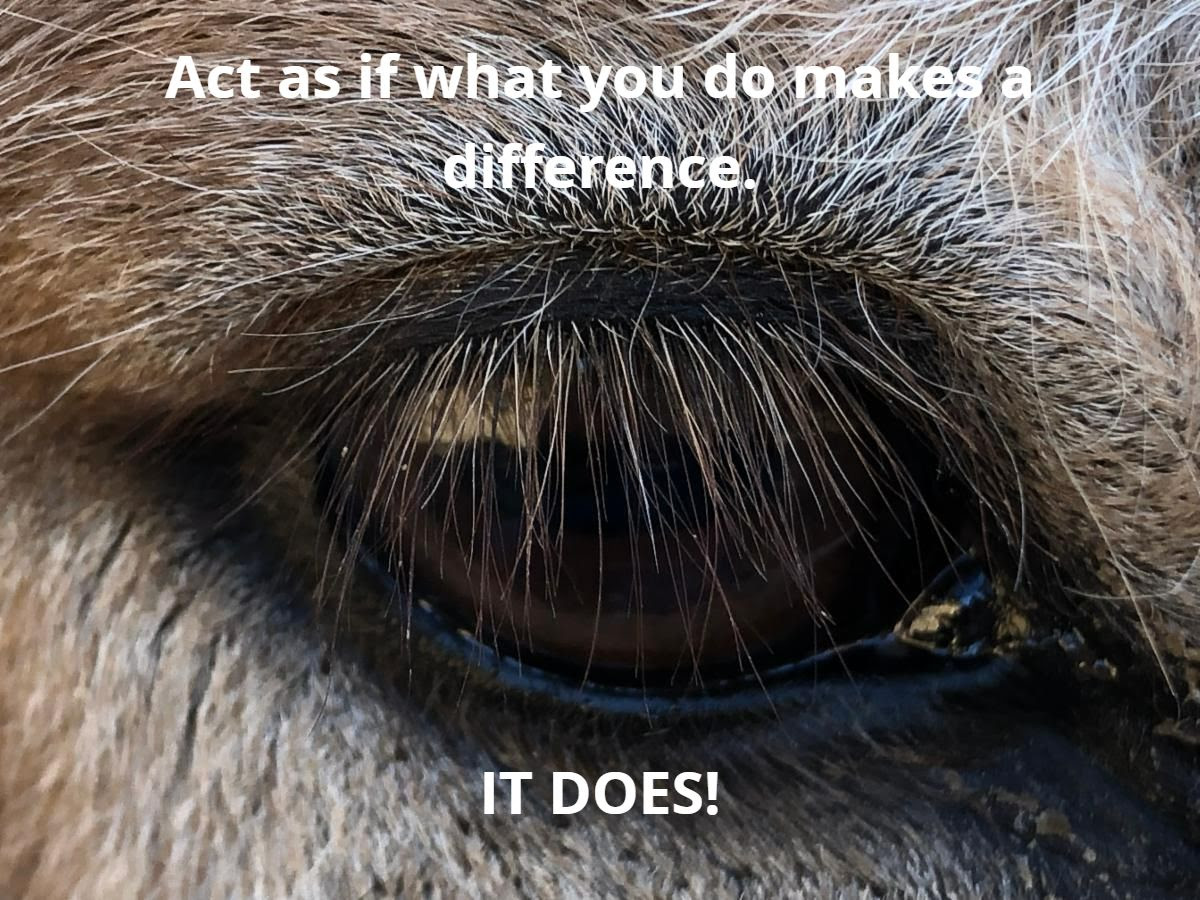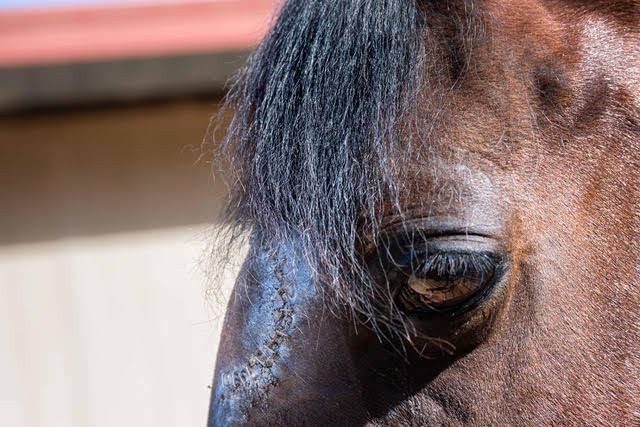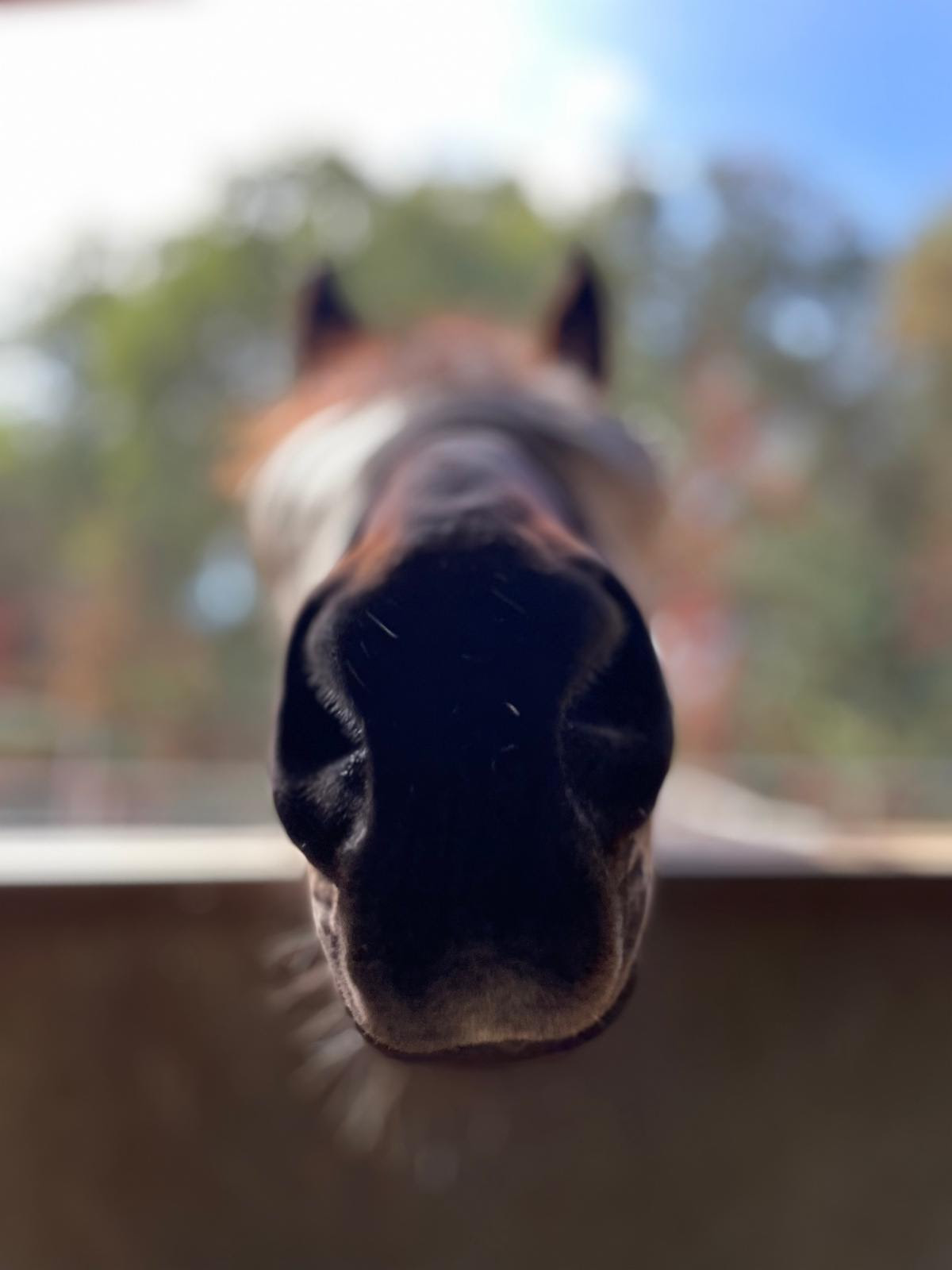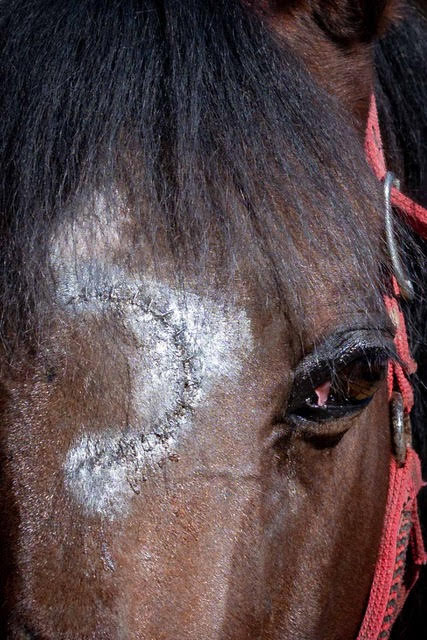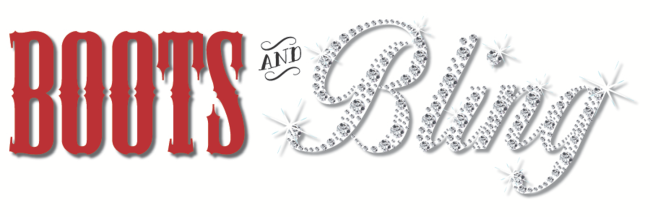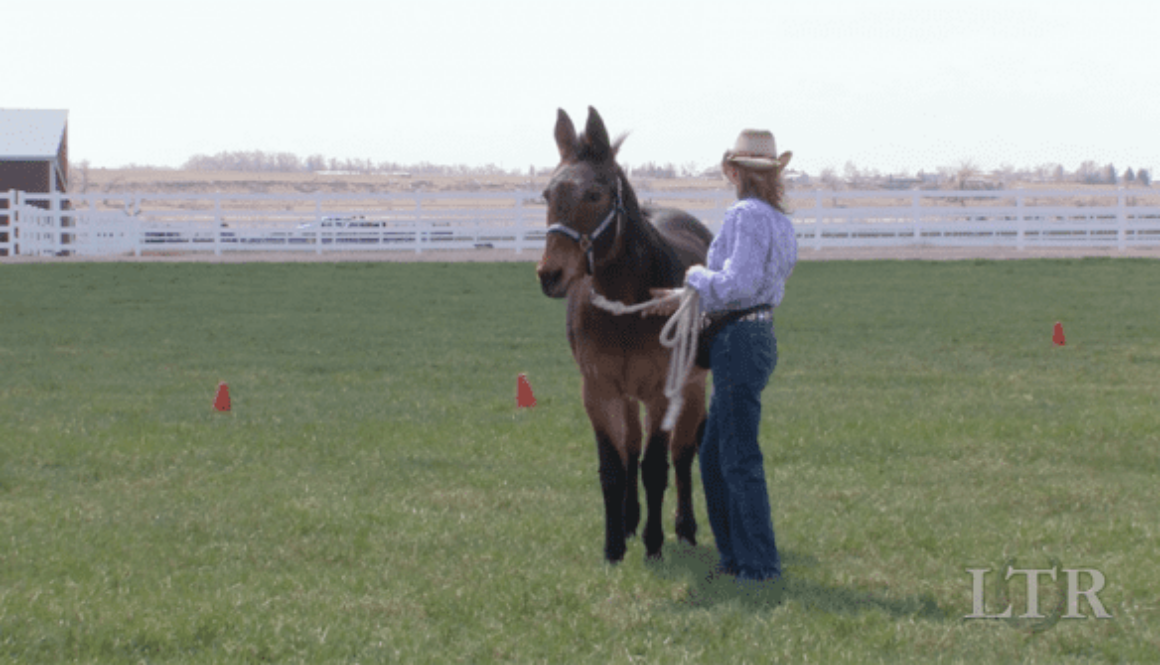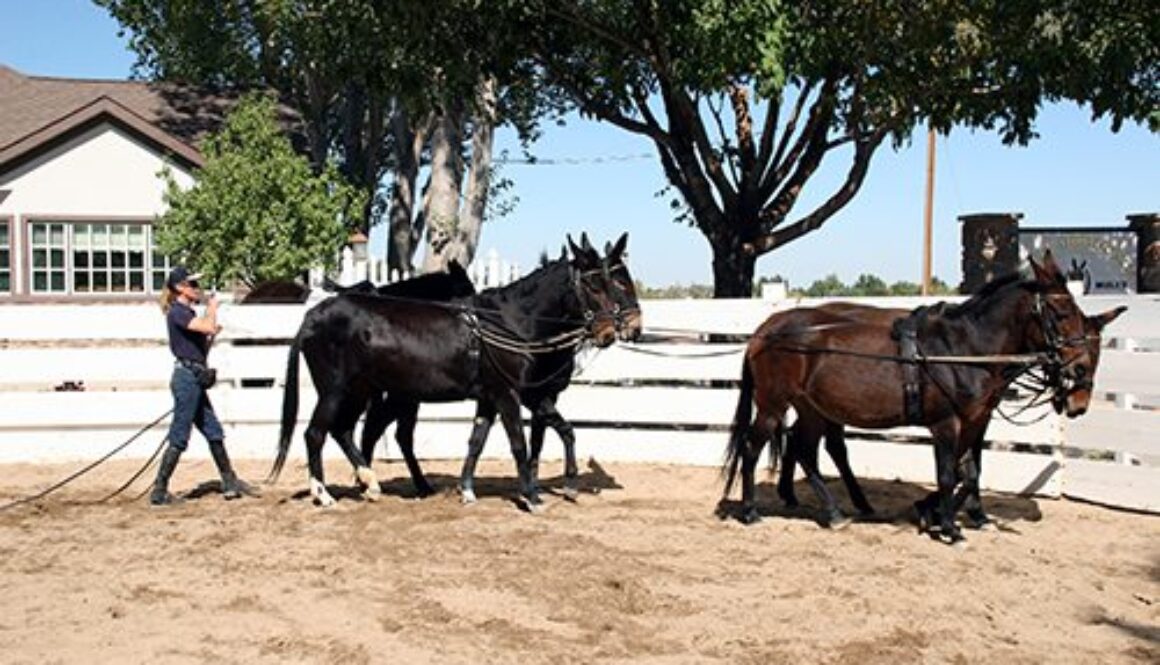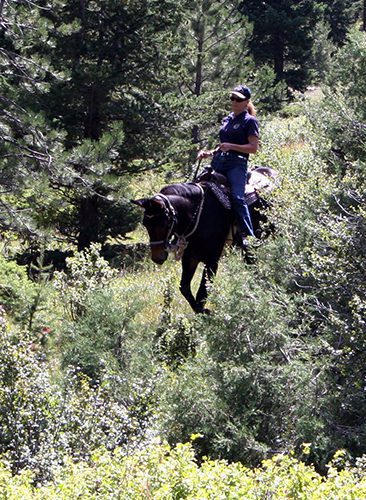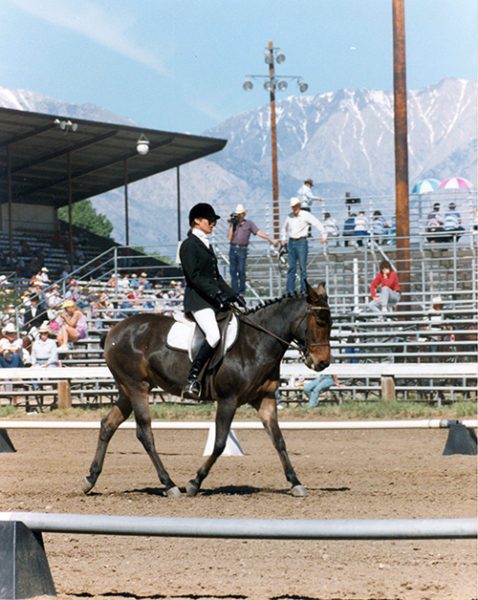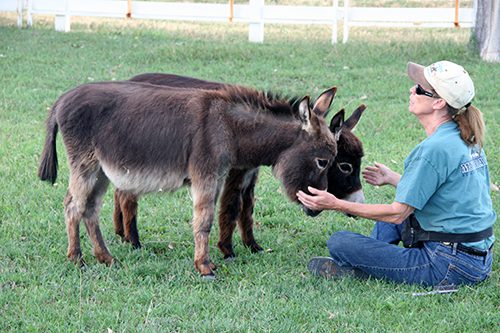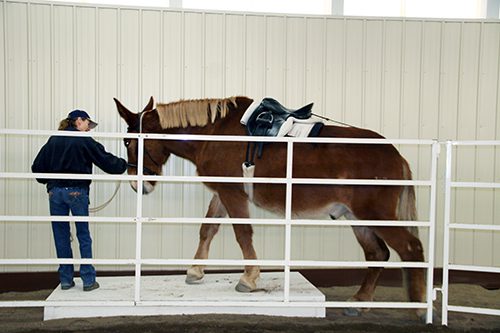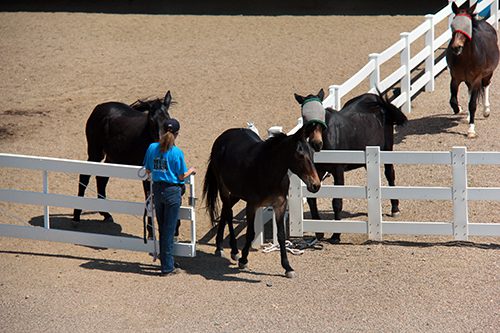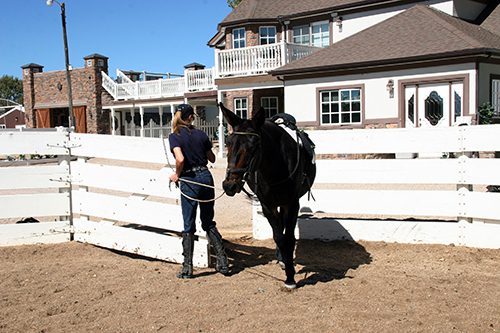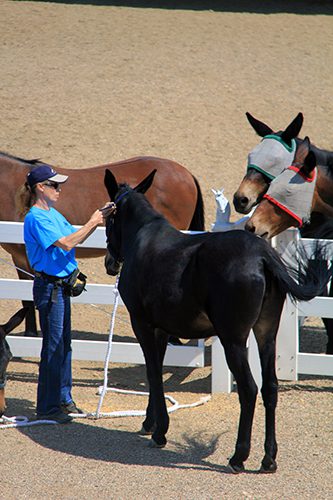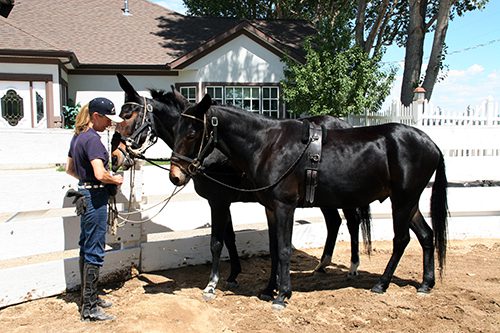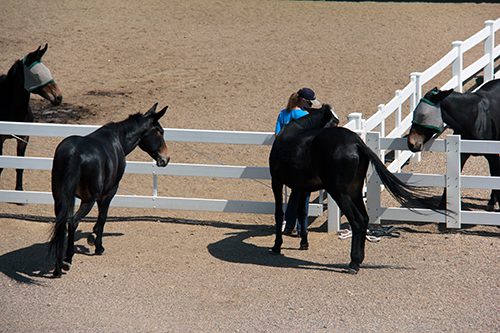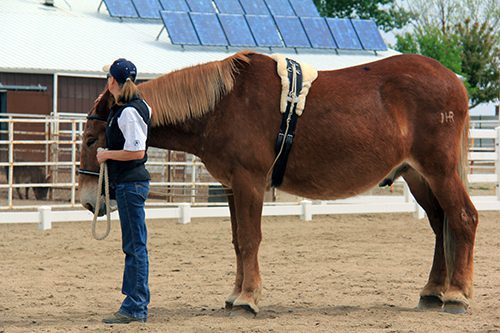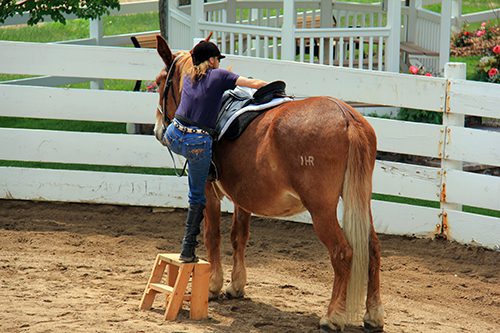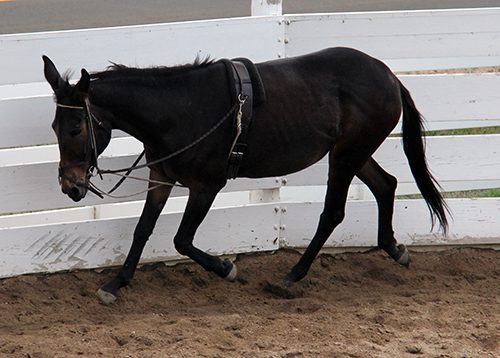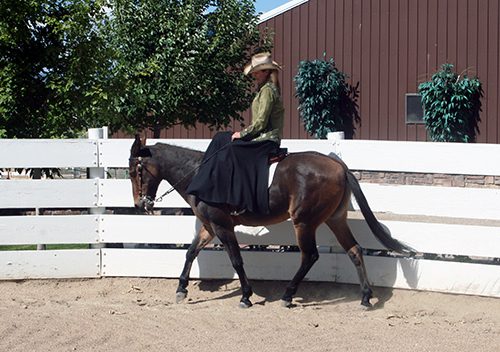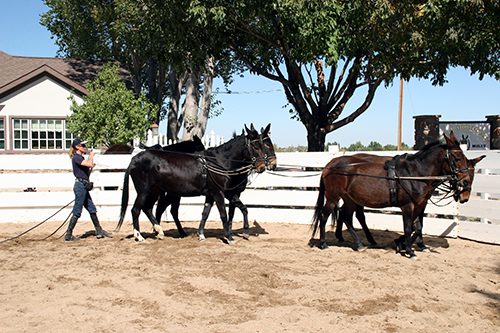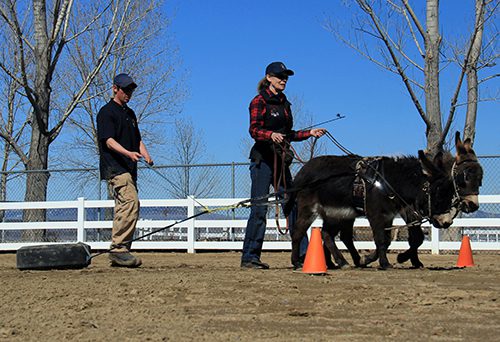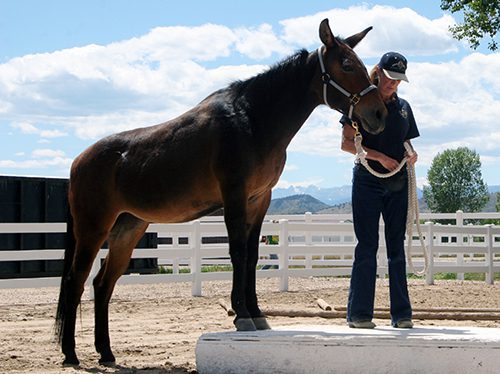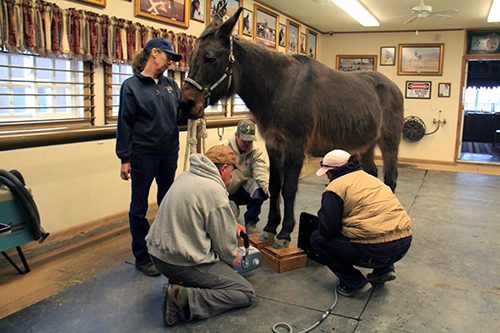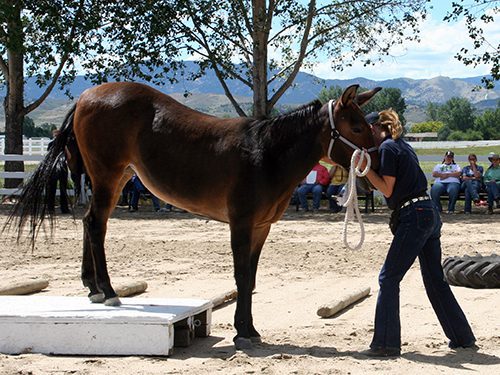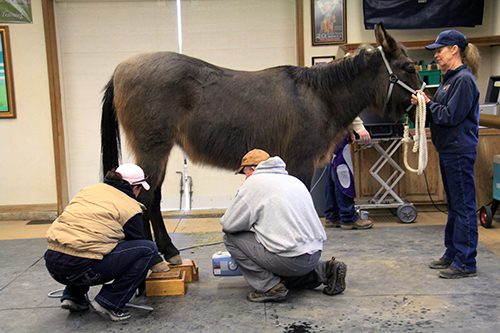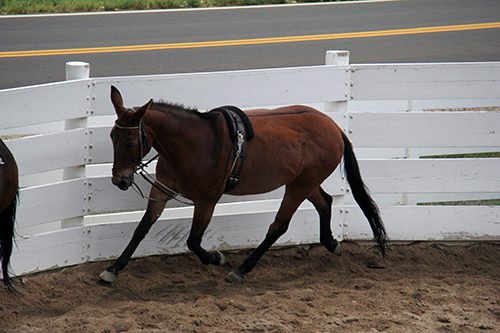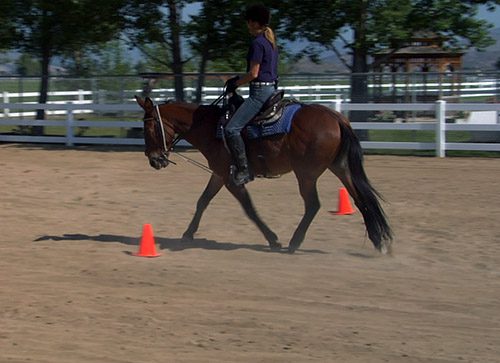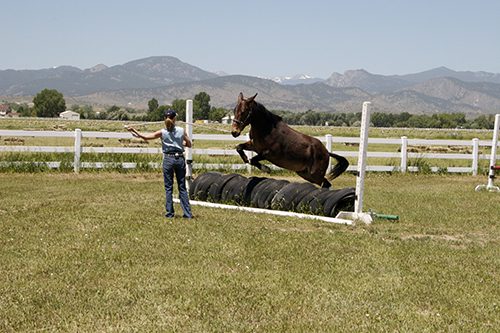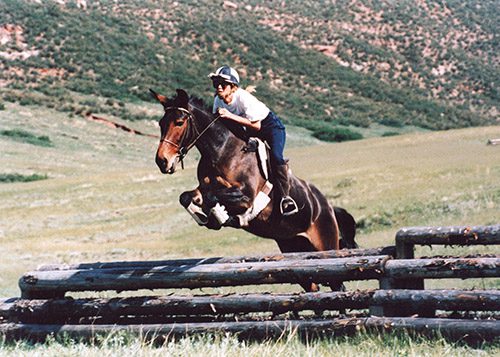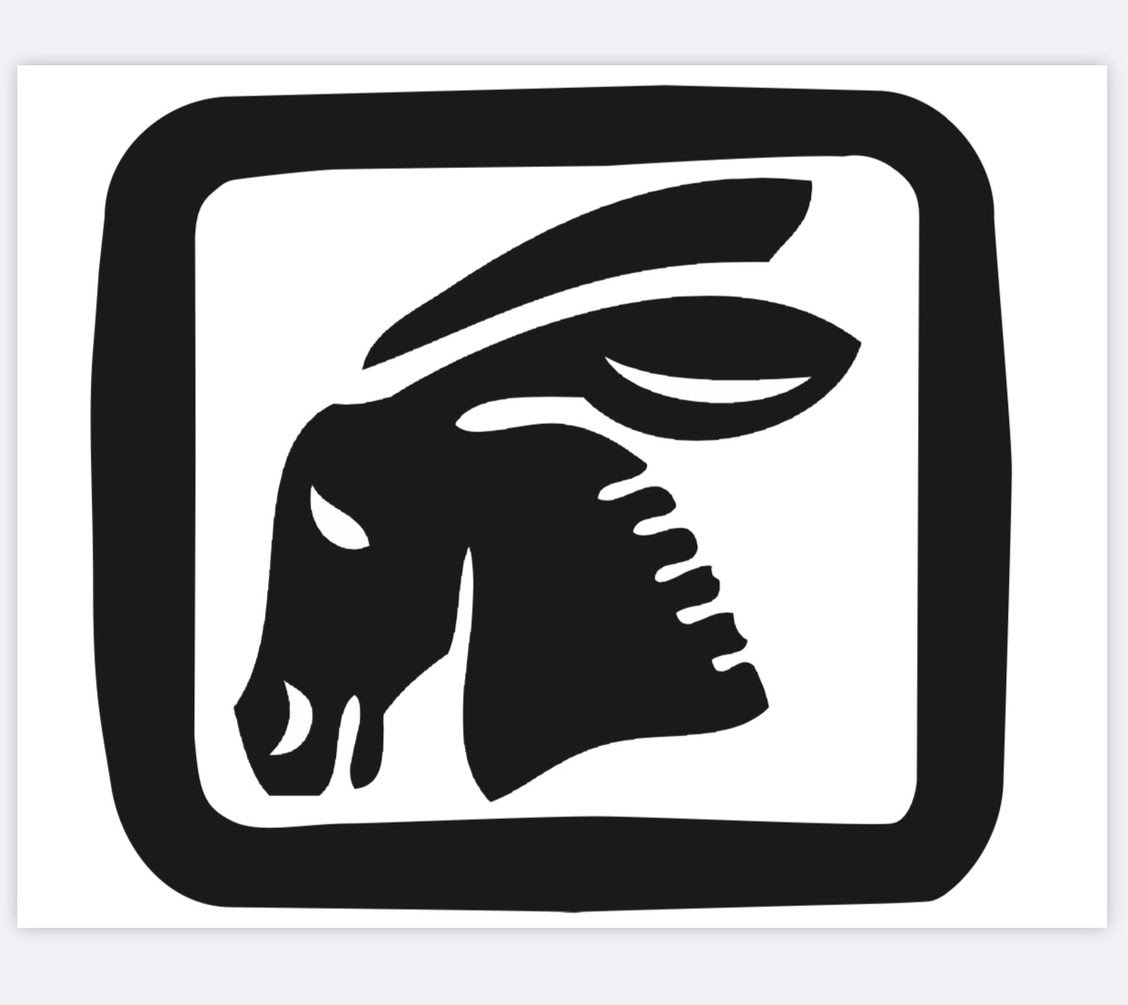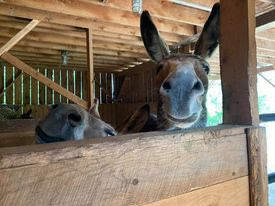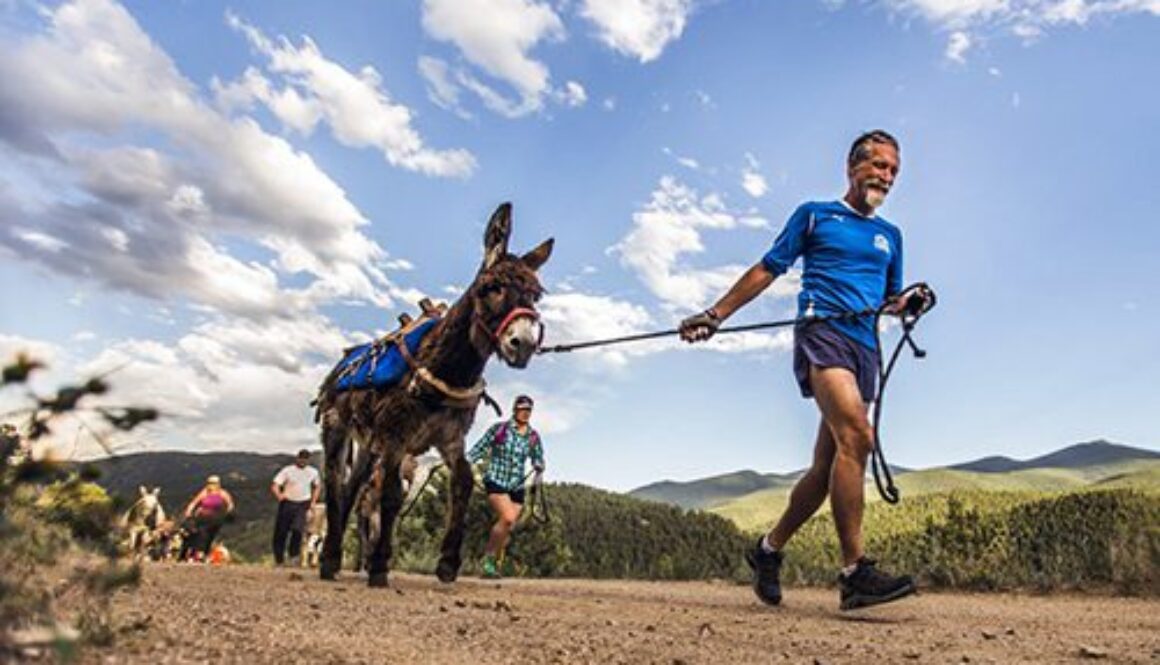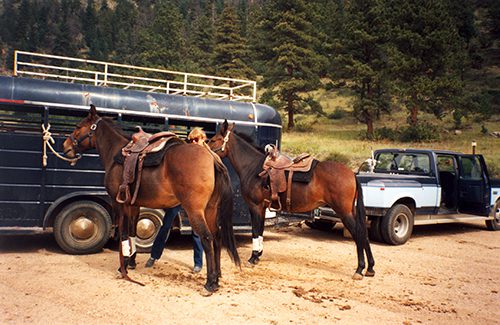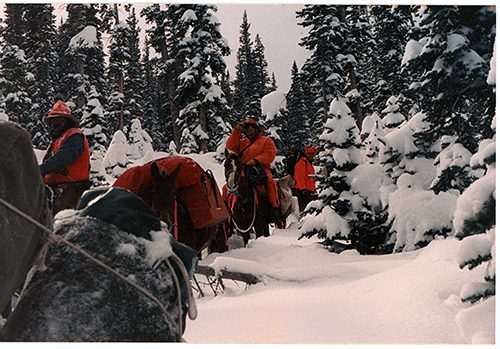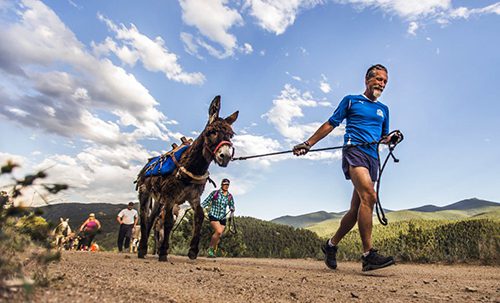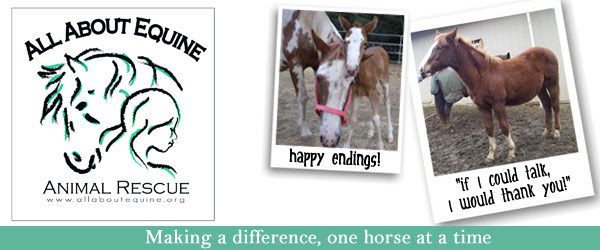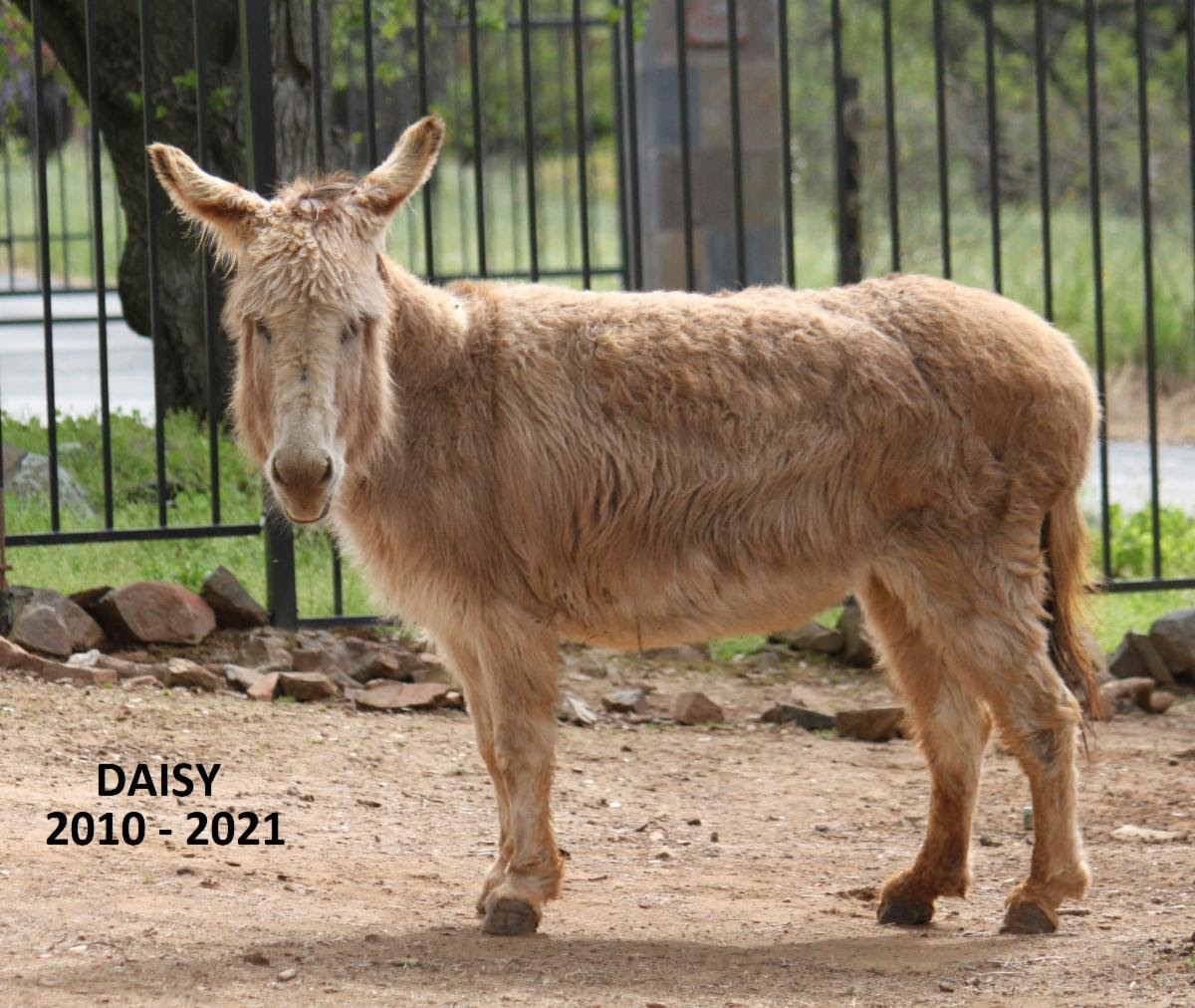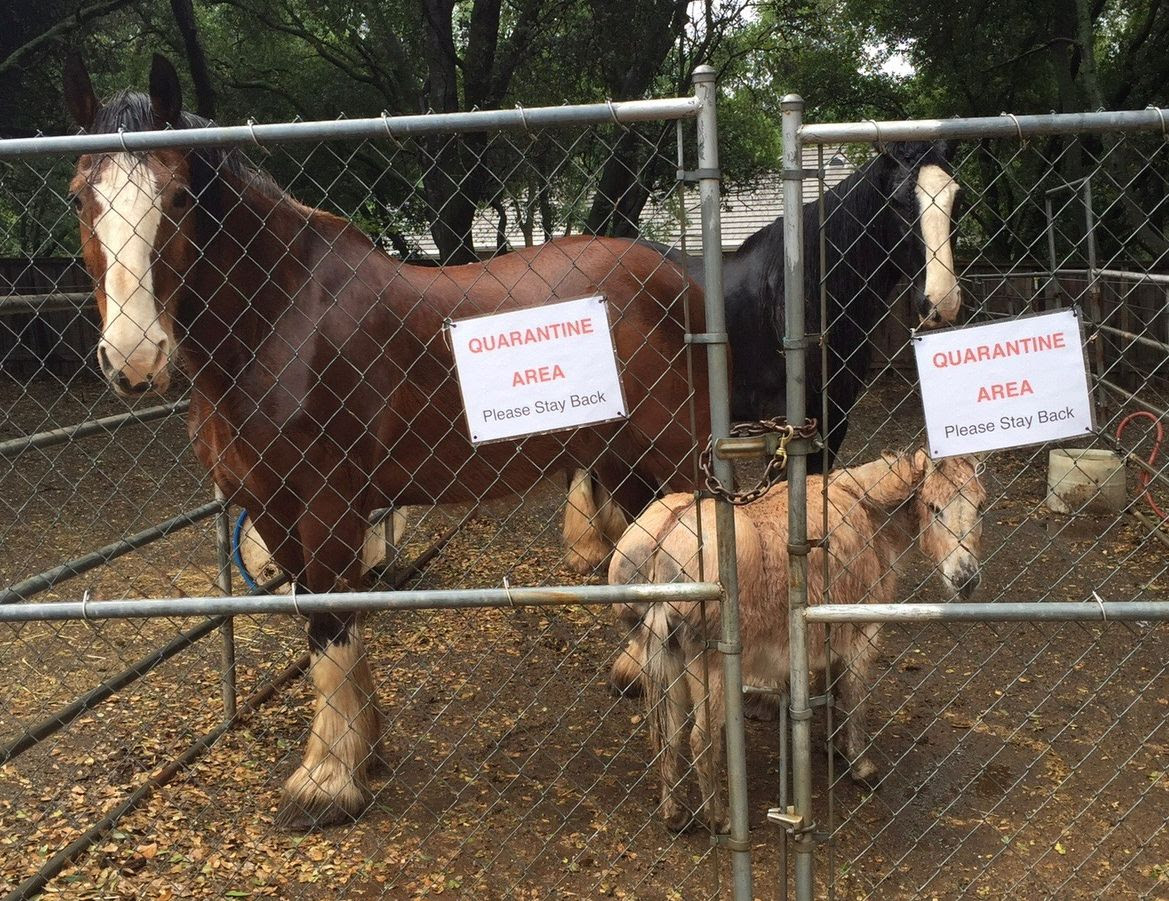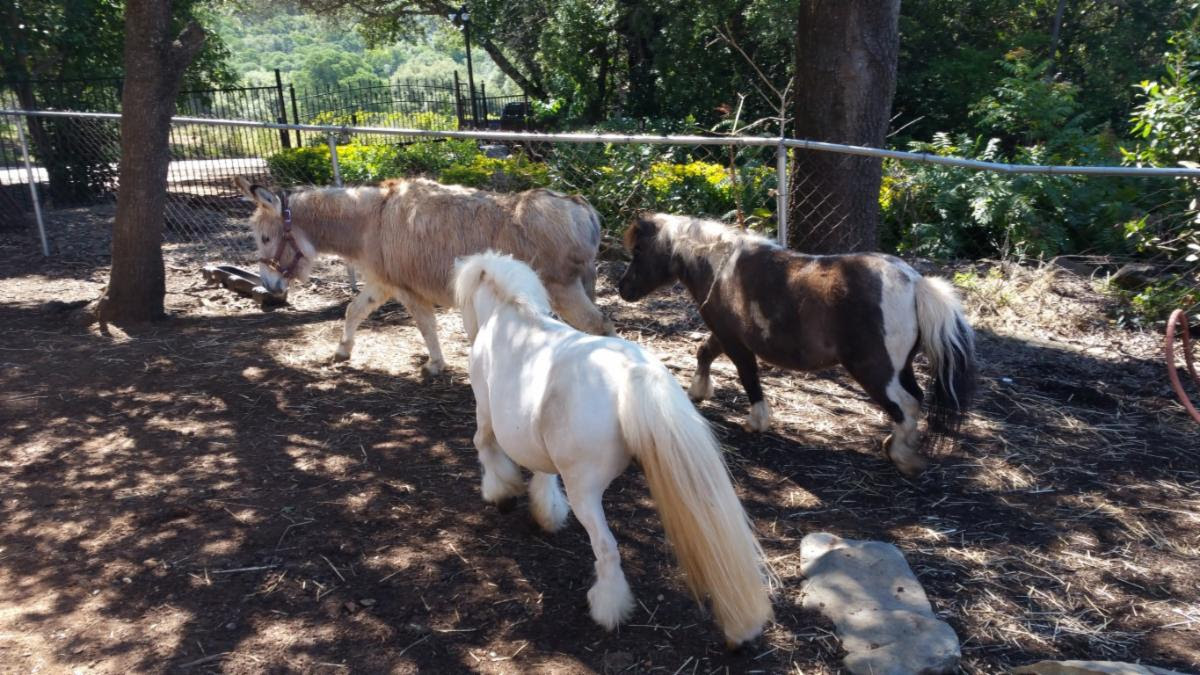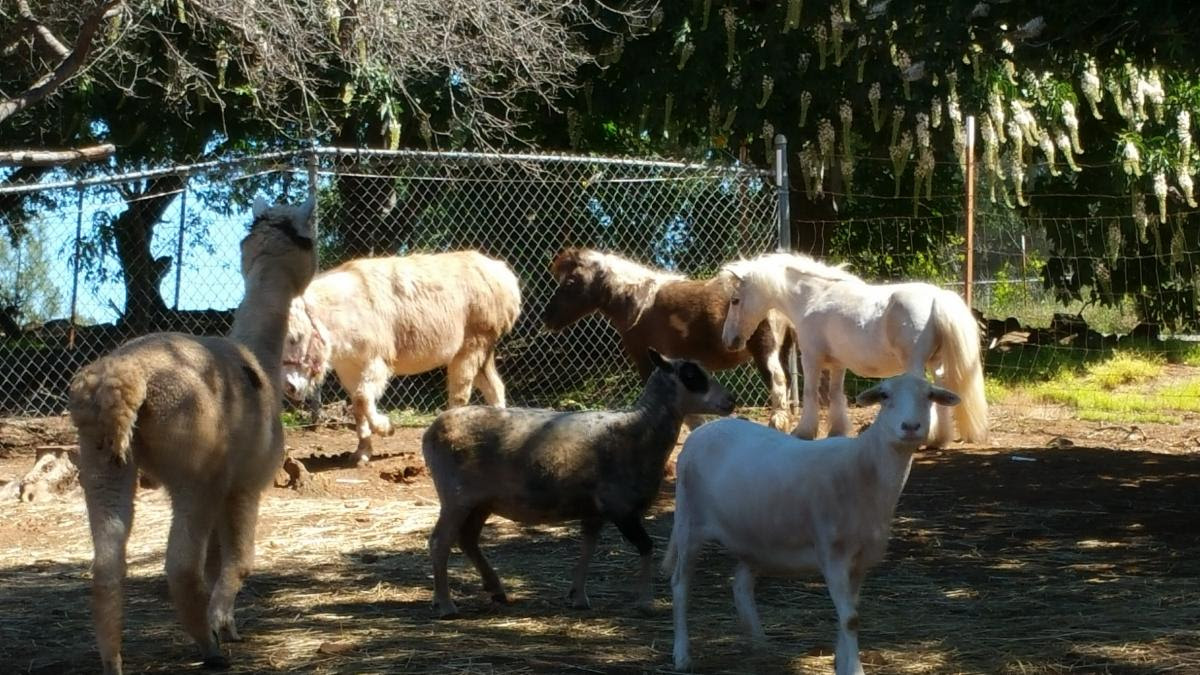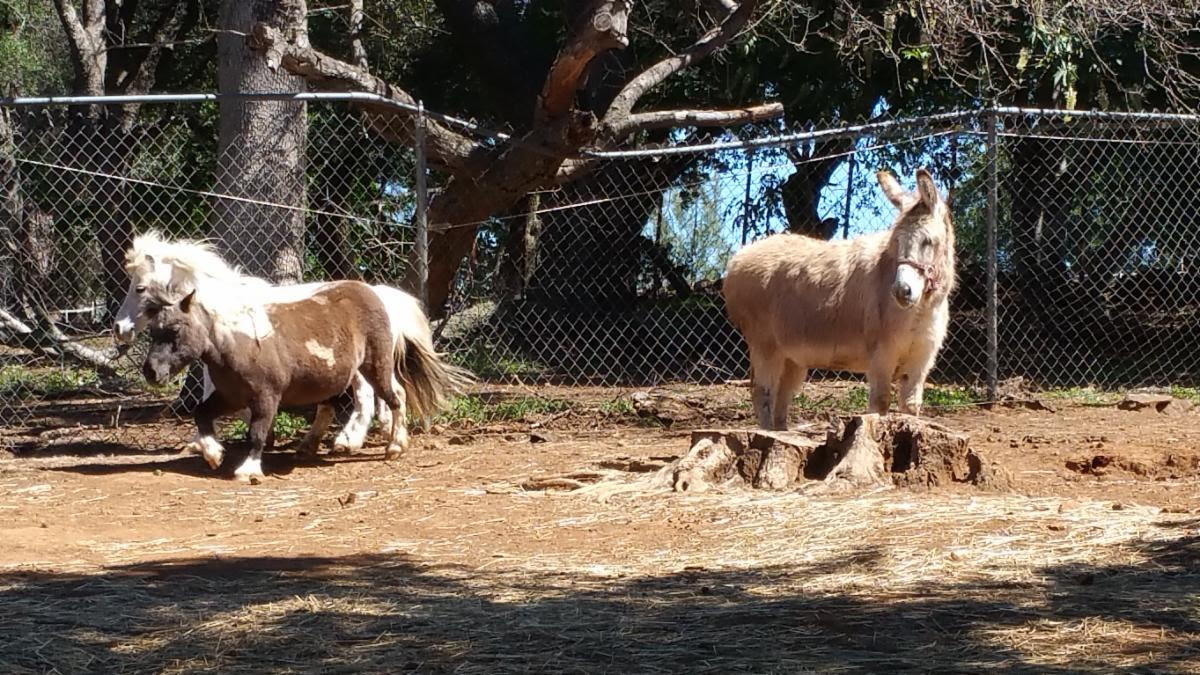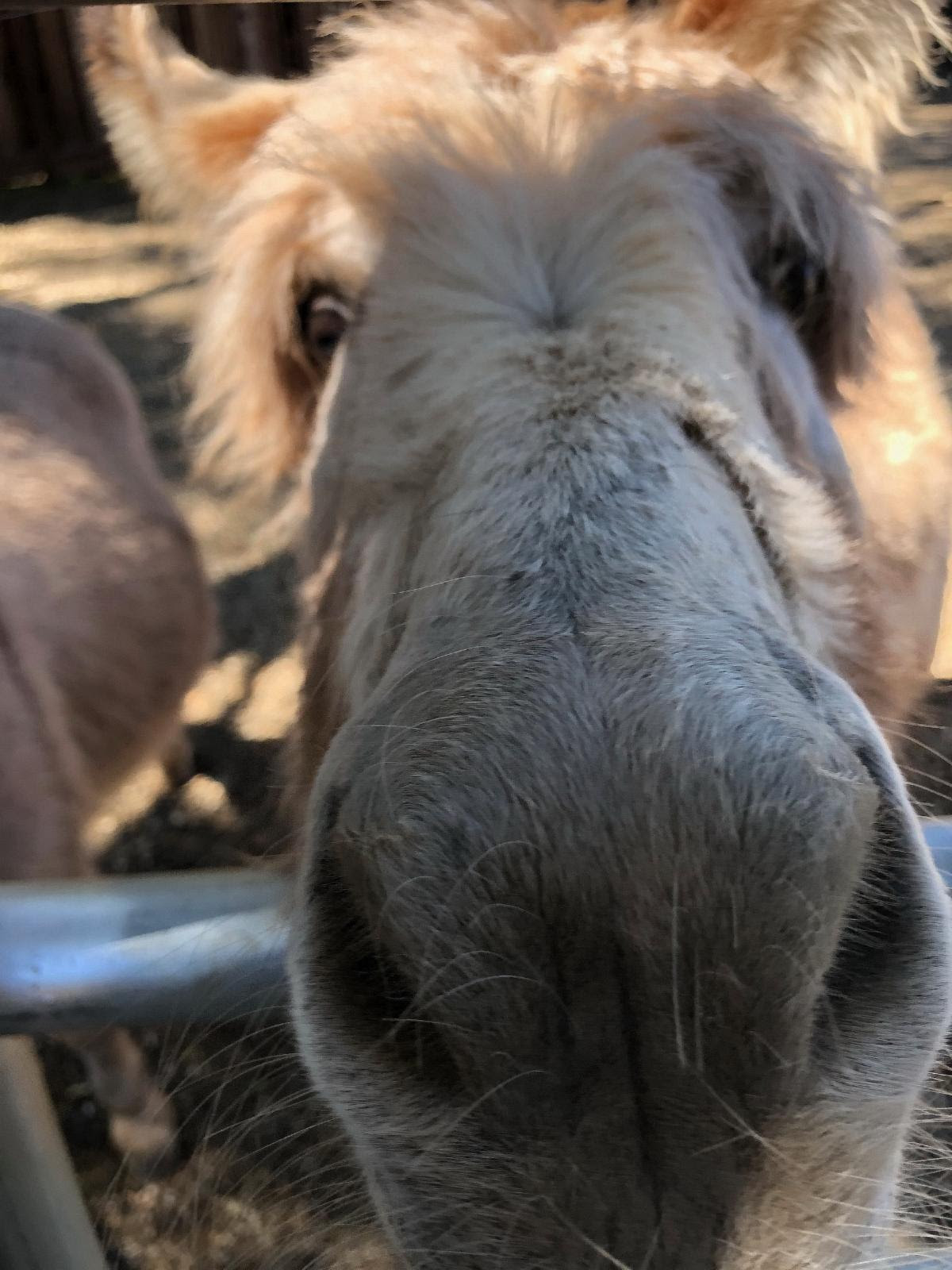MULE CROSSING: Mule Fever, Part 1
By Meredith Hodges
During the last 50 years, thousands of people in this country have become afflicted with a rather unique condition. The symptoms include childlike behavior coupled with loyalty, integrity, honesty, maturity, humility and moments of overwhelming humor. Those who have this condition are among the happiest people in the world, for they are fortunate enough to experience “Mule Fever.”
 “Mule Fever” begins when you gaze into the soft brown eyes of a big beautiful mule and he cocks an ear in your direction. Timidly, you request a ride, the mule complies, and the fever begins. A couple of miles down the road, a pheasant runs out of the brush and under your mule’s nose causing him to shy and unseat you. You lie in the road pained by your bruises, cussing the mule when he suddenly returns, nuzzles your face and gazes back at you with a perplexed and concerned look. Those soft brown eyes burn through to your soul, warm your heart and invite you to get up and try again. Once astride your mule again, you’d swear he is being extra-careful to avoid further mishaps. He seems sorry enough, so you forgive and forget and the bond between you strengthens and deepens. This is called “Mule Fever” and once it is contracted, one rarely recovers. Mules will remain in your heart and soul until the day you die!
“Mule Fever” begins when you gaze into the soft brown eyes of a big beautiful mule and he cocks an ear in your direction. Timidly, you request a ride, the mule complies, and the fever begins. A couple of miles down the road, a pheasant runs out of the brush and under your mule’s nose causing him to shy and unseat you. You lie in the road pained by your bruises, cussing the mule when he suddenly returns, nuzzles your face and gazes back at you with a perplexed and concerned look. Those soft brown eyes burn through to your soul, warm your heart and invite you to get up and try again. Once astride your mule again, you’d swear he is being extra-careful to avoid further mishaps. He seems sorry enough, so you forgive and forget and the bond between you strengthens and deepens. This is called “Mule Fever” and once it is contracted, one rarely recovers. Mules will remain in your heart and soul until the day you die!
The best place to witness this phenomenon is at Bishop Mule Days in Bishop, California over Memorial Day weekend each year. Thousands of mule enthusiasts gather together with their mules and donkeys to exchange stories, ideas, and even mules. The current economic troubles of the country are quickly dispelled with solutions such as: “Out of fuel, ride a mule!” and “Out of gas, ride an ass!” “And what of kicking?” asked an inquisitive bystander. A good-natured muleskinner replied, “You can’t kick while you’re working” and “You can’t work while you’re kicking!” Bishop Mule Days is a wonderful opportunity for everyone to share and enjoy a memorable weekend. Mules are the catalyst that brings people together, building new friendships and renewing old ones.
 One of the most memorable cases of “Mule Fever” broke out in the city of Ogden, Utah when three dedicated mule men decided to ride their mules 600 miles to the famed Bishop Mule Days in California. Mark Romander of Meadow Brook Mules in Ogden, originated the idea to ride to Bishop two years before, but his plans were delayed. Mark had planned to make the trip alone, but a few weeks before his departure in 1983, someone let his stock out and his mule was hit by a car and killed. This tragic event quelled Mark’s plans for 1983, but made him more determined to make this ride. In 1984, his plans were again foiled by economic troubles, but his will to make the ride was strengthened. In 1985, he was more determined than ever to make his 600 mile ride with his partners, Scott Van Leeuwen, and Jerry Tindell, a Del Monte, California, horseshoer.
One of the most memorable cases of “Mule Fever” broke out in the city of Ogden, Utah when three dedicated mule men decided to ride their mules 600 miles to the famed Bishop Mule Days in California. Mark Romander of Meadow Brook Mules in Ogden, originated the idea to ride to Bishop two years before, but his plans were delayed. Mark had planned to make the trip alone, but a few weeks before his departure in 1983, someone let his stock out and his mule was hit by a car and killed. This tragic event quelled Mark’s plans for 1983, but made him more determined to make this ride. In 1984, his plans were again foiled by economic troubles, but his will to make the ride was strengthened. In 1985, he was more determined than ever to make his 600 mile ride with his partners, Scott Van Leeuwen, and Jerry Tindell, a Del Monte, California, horseshoer.
Mark, Scott and Jerry left Ogden on May 1, and began their long trek south through Utah to Highway 6 and across some 400 miles of desert and mountains to Bishop, California. Spring had been good that year, and grass in the desert was plentiful. They averaged about 35 miles per day, sometimes going as far as 40 or 50 miles in a day to reach water. During the nights, they camped. They reached their destination on May 19, 1985.
 The three men agree that the best part of their long journey was all the wonderful people they met along the way who did everything they could to help them reach their destination. People extended their hospitality, allowing them to bed down at their ranches along the route. Others met them at strategic points with feed and water and other necessary supplies that would be difficult to carry along with them. Many new friendships were made on the trail to Bishop. Now that Bishop Mule Days is past, Mark, Scott and Jerry plan to go back and visit their newfound friends and extend their gratitude for helping to make their ride a tremendous success. For the future, they planned a 300-mile wagon ride to Bishop. We wished them the best of luck and supported them in their journey.
The three men agree that the best part of their long journey was all the wonderful people they met along the way who did everything they could to help them reach their destination. People extended their hospitality, allowing them to bed down at their ranches along the route. Others met them at strategic points with feed and water and other necessary supplies that would be difficult to carry along with them. Many new friendships were made on the trail to Bishop. Now that Bishop Mule Days is past, Mark, Scott and Jerry plan to go back and visit their newfound friends and extend their gratitude for helping to make their ride a tremendous success. For the future, they planned a 300-mile wagon ride to Bishop. We wished them the best of luck and supported them in their journey.
Ogden was fortunate to have Mark and Scott’s Meadow Brook Mule Ranch. They stood several jacks of all sizes and colors and had many different kinds of mules for sale. They were always more than willing to help anyone who wanted to know more about mules and they cooperated with other mule operations in the area to further the promotion of mules. These men are still doing all they can to educate the public about the versatility and  exceptionality of mules. In addition to the 300-mile wagon ride, they sponsored an All-Mule Branding in the Tonopah and Ely, Nevada area where cowboys all rode mules to brand the cattle. Also, a hundred mules were present in the Ogden Parade on July 24th, 1986 and they hoped to have the Ogden Rodeo announced from the back of a mule. There are over 70 members of the Ogden Ass Association, all of which have contracted “Mule Fever.” There is no doubt in my mind there would be many more mule enthusiasts before long.
exceptionality of mules. In addition to the 300-mile wagon ride, they sponsored an All-Mule Branding in the Tonopah and Ely, Nevada area where cowboys all rode mules to brand the cattle. Also, a hundred mules were present in the Ogden Parade on July 24th, 1986 and they hoped to have the Ogden Rodeo announced from the back of a mule. There are over 70 members of the Ogden Ass Association, all of which have contracted “Mule Fever.” There is no doubt in my mind there would be many more mule enthusiasts before long.
There are as many different kinds of mules as there are individuals to care for them. In observing the social behavior in a mule or donkey herd, you can see that the rules are simple: “Do unto others as you would have them do unto you!” Each mule observes the other’s “space,” yet when closeness is needed, it’s, “You scratch my back and I’ll scratch yours.” Humans are a mule’s best-loved companion, since each mule can generally have one all to himself to train and condition. We humans would like to believe that we are the trainers, but take a moment and reflect on the qualities in ourselves that mules have been responsible for like loyalty, honesty, maturity, humility, and humor. People who think that those of us with “Mule Fever” are riding inferior animals should get off their high horse and onto a mule. False pride will tear people apart where the truest pride of mules can bring people together!
To learn more about Meredith Hodges and her comprehensive all-breed equine training program, visit LuckyThreeRanch.com, MEREDITH HODGES PUBLIC FIGURE Facebook page, or call 1-800-816-7566. Check out her children’s website at JasperTheMule.com. Also, find Meredith on Pinterest, Instagram, MeWe, YouTube and Twitter..
Covered in TRAINING MULES & DONKEY: A LOGICAL APPROACH TO TRAINING, TRAINING WITHOUT RESISTANCE and EQUUS REVISITED at www.luckythreeranchstore.com.
© 1985, 2016, 2024 Lucky Three Ranch, Inc. All Rights Reserved.



